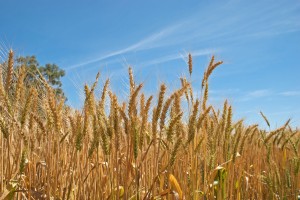 Grain futures gained on Tuesday following the U.S. Department of Agricultures weekly crop progress report on Monday and ahead of planting and stocks report later in the week.
Grain futures gained on Tuesday following the U.S. Department of Agricultures weekly crop progress report on Monday and ahead of planting and stocks report later in the week.
On the Chicago Mercantile Exchange, corn futures for September delivery traded at $5.7963 a bushel at 13:45 GMT, up 0.04% on the day. Prices ranged between days high at $5.8363 and low of $5.7913. The grain rose for the first time in three days after crumbling around 12% yesterday.
The USDA will publish its grain planting report on June 28 and also report quarterly grain and soybeans inventories. Due to rains disrupting planting, U.S. farmers will probably sow less acres of land with corn compared to the previous March prediction – 95.4 million acres, down from 97.28.
Paul Georgy, president of Allendale Inc., wrote in a market comment: “Traders are looking forward to the planted acreage report because the discussion on prevent planting and switching from corn to beans will be over. Harvested acres will be the real number to watch as it will be considerably higher than last year for corn no matter what the planted acreage.”
The USDA said in its weekly crop progress report on Monday that 96% of the nations corn crop has emerged as of June 23, up from the preceding weeks 92%. This, however, was lower than the last years 100% during the comparable week and the five-year average of 99%.
As for the corn crop condition, quality has remained overall the same in comparison to the previous week, but a lot better than last years crop. As of June 23, 8% of the crop fell in the “Very poor” and “Poor” categories, 27% in “Fair” and 65% were categorized as “Good” and “Excellent”. In 2012, 14% of the crop was of “Very poor” and “Poor” quality, 30% “Fair” and the remaining 56 was “Good” and “Excellent”.
Soybeans gain
Meanwhile, soybeans for August delivery also traded on the green side, gaining 0.38% for the day. The oilseed stood at $14.2575 a bushel at 13:45 GMT, ranging between daily high and low at $14.2913 and $14.1713 per bushel.
The U.S. Department of Agriculture said in its report on Monday that as of the week ending June 23, 92% of the U.S. soybeans crop was planted, up from the previous weeks 85%. However, this is below the five-year average of 95% and last years 99% during the comparable week.
The agency also reported that 81% of the crop emerged up to June 23, well above the prior weeks 66%, but still below the five-year average of 89% and last years 98% reading.
Soybean condition is overall better this year, compared to 2012. Soybeans of “Very poor” and “Poor” quality totaled 7% of the crop, 28% was of “Good” condition and 65% was categorized as “Good” and “Excellent”. Last years readings stood at 15% for “Very poor” and “Poor”, 32% for “Fair” and the remaining 53% was in the premium categories.
Soybeans made a steep plunge on Monday, losing 4.66% as demand outlook was dimmed after Chinas economy growth forecast was trimmed downwards once again. Goldman Sachs cut its GDP growth expectations for China to 7.4%, down from 7.8%. Projections for the 2014 and 2013 Q1 growth were also revised lower. This pushed soybean prices down as the Asian country is the worlds biggest consumer.
Wheat gains as well
Wheat also edged higher, marking a 0.53% daily gain. Wheat September futures traded at $6.9163 per bushel, ranging between days high at $6.9463 and low of $6.8738 per bushel. Unlike other grains, wheat fell less during the past days, losing only 1.45% on Monday and even recorded a weekly gain during last week when the dollar pushed all dollar-priced commodities down, boosted by Feds latest statement.
According to USDAs report, 20% of the winter wheat crop was harvested as of June 23, up from the prior weeks 11%. This, however, is well below last years 63% and the five-year average 37% reading. Delayed wheat harvesting was caused by rains, which supported prices recently despite ample supply forecasts from Australia, Russia and Ukraine’s Black Sea region and Europe.
Winter wheat condition remained almost unchanged in comparison to last week, but is worse than last years. As of June 23, 43% of the crop was categorized as “Very poor” and “Poor”, 25% was “Fair” and 31% “Good” and “Excellent”. Last years readings stood at 17% “Very poor” and “Poor”, 29% “Fair” and the remaining 44% “Good” and “Excellent”.
As for the spring wheat, the USDA said in its report that 96% of the crop was planted, compared to 92% in the previous week and below last year and the five-year average readings of 100% and 99% respectively. As of June 23, 90% of the spring wheat had emerged, 6% above the previous week, but below last years 100% and the five-year average reading of 97%





